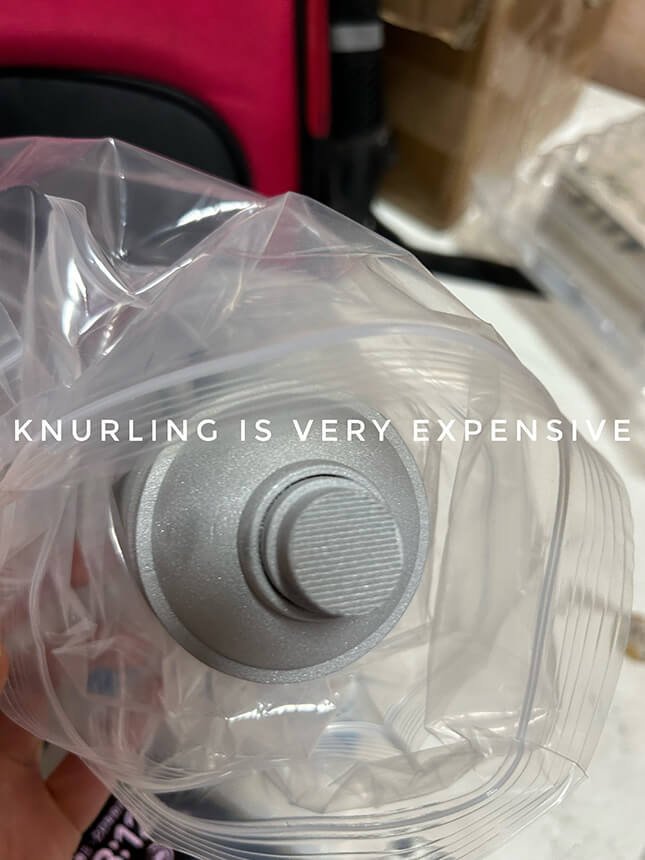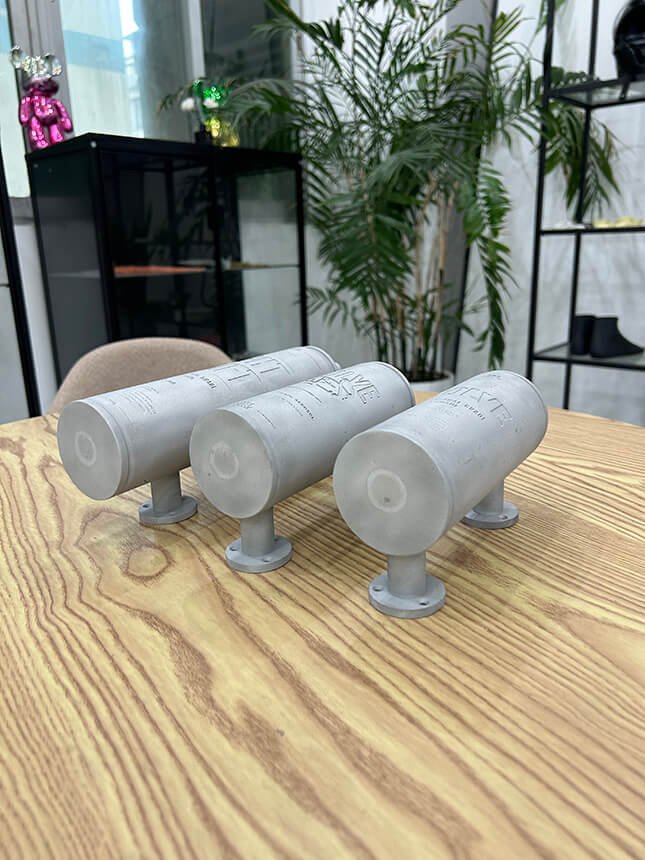How can we wee something in mind till it is 3D rapid prototyped?
From Idea to 3D Rapid Prototype

1. It all started with the handle drawing that the client wanted to prototype. At that stage, neither of us was 100% sure how to make it work. However, we already knew the material would be metal, and the handle would feature engraved letters.
From the drawing, we found that the part could be made through CNC machining and engraving. But because the letters were so small, the engraving might not be clear. Consequently, we recommended screen printing instead — although this would incur a higher cost.
2. Additionally, the knurling on the top of the handle would be very expensive.
3. Producing the handle entirely by CNC machining would also be costly, and the total CNC machining price was far beyond the client’s budget.
From the drawing, we found that the part could be made through CNC machining and engraving. But because the letters were so small, the engraving might not be clear. Consequently, we recommended screen printing instead — although this would incur a higher cost.
2. Additionally, the knurling on the top of the handle would be very expensive.
3. Producing the handle entirely by CNC machining would also be costly, and the total CNC machining price was far beyond the client’s budget.
So, what can we do?
To reduce costs, we suggested using 3D printing, and the client accepted the idea. We first recommended resin printing, but the client refused, saying that since this was a door handle, they didn’t want plastic. We then considered metal 3D printing. A solid metal print would cost almost the same as CNC machining, so we proposed a hollow metal 3D print instead, combined with sandblasting, at a much better price. The client agreed to the hollow design.
The biggest challenge remained the tiny letters — they were so small that most companies would struggle to engrave them clearly and deeply.
Fortunately, we had just acquired the latest HP metal 3D printer, which solved the problem.
In the end, we successfully brought the rapid prototyping part to life.
To reduce costs, we suggested using 3D printing, and the client accepted the idea. We first recommended resin printing, but the client refused, saying that since this was a door handle, they didn’t want plastic. We then considered metal 3D printing. A solid metal print would cost almost the same as CNC machining, so we proposed a hollow metal 3D print instead, combined with sandblasting, at a much better price. The client agreed to the hollow design.
The biggest challenge remained the tiny letters — they were so small that most companies would struggle to engrave them clearly and deeply.
Fortunately, we had just acquired the latest HP metal 3D printer, which solved the problem.
In the end, we successfully brought the rapid prototyping part to life.

